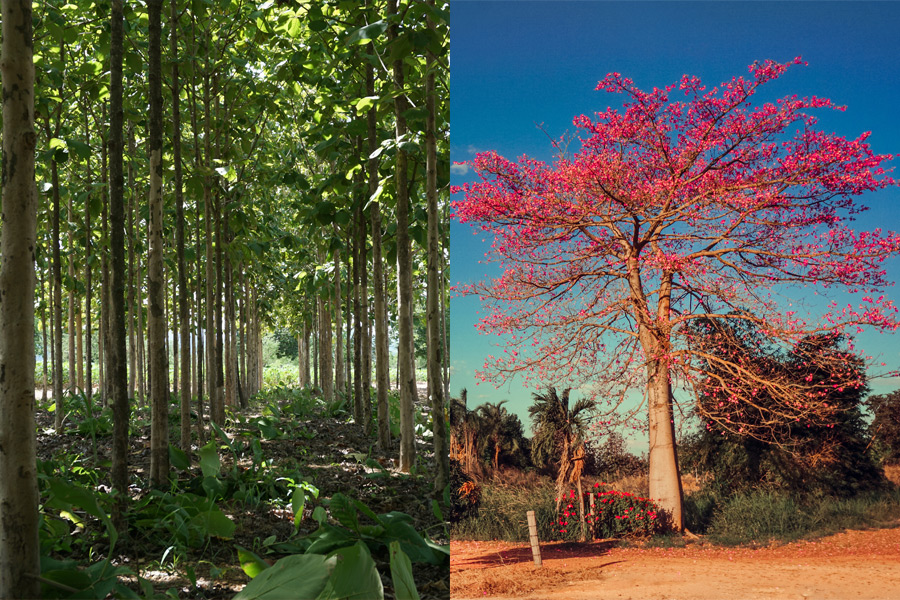When building outdoor furniture or a deck, you want the right materials that hold up over time. Teak has been used for centuries as an outdoor wood option because of its durability and natural beauty.
However, in recent years another type of wood has appeared on the scene: ipé (pronounced ee-pay). So which way should you go as a consumer in the ipe vs. teak debate? Let’s take a deeper look at both woods so that you can make an informed decision based on your specific needs.
What Is Ipe (and How Does It Compare to Teak)?
Ipe is a tropical hardwood that’s sometimes called Brazilian walnut or ironwood. It’s a member of the cypress family and grows in South America, particularly in Brazil.
Ipe has been used in construction and furniture making for centuries. Many covet the wood for outdoor uses due to its high-quality durability and strength.
Shipbuilders also use ipe because of its excellent resistance against rot and termites. These same qualities make the wood ideal for outdoor applications like decks and patios where there is consistent exposure to moisture.
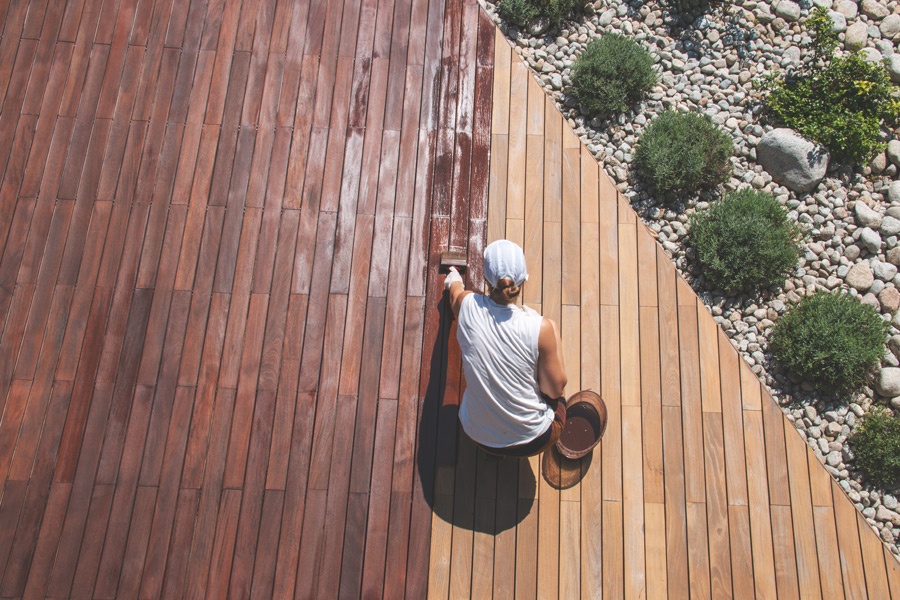
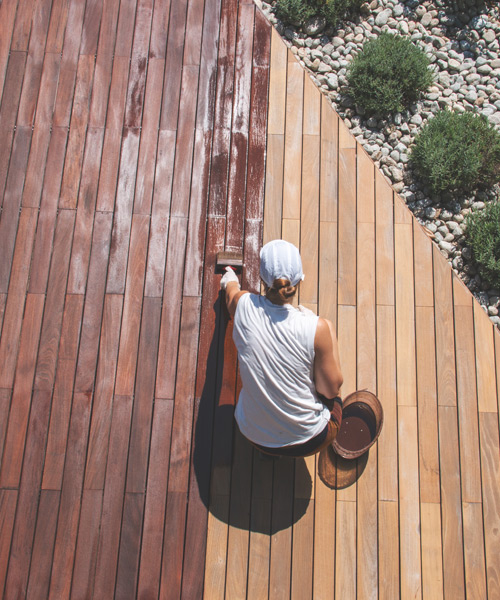
The same qualities make ipe perfect for flooring too. Because floors are often exposed directly outdoors (or at least under room temperature), they need extra protection from moisture damage over time.
What Are the Pros and Cons of Using Ipe Wood?
The pros of using ipe wood are that it is a strong, durable, and beautiful wood. Ipe offers a “hardness” rating of to three times that of teak, making it an ideal choice for high impact areas.
The cons of using ipe wood include:
- It’s more difficult to work with and shape than teak
- Harvesting ipe is very damaging to the Amazon rainforests of Brazil
- The logging process is very inefficient. According to ProductsDirect.com, “a 2018 study by the International Union for Conservation of Nature (IUCN) put ipe’s processing efficiency at 42%, meaning that the majority of every tree is wasted.”
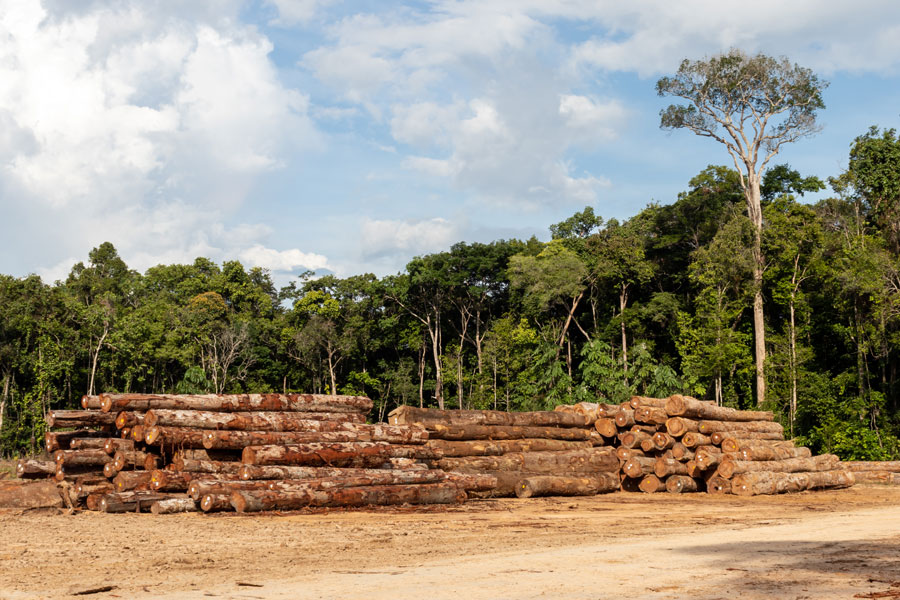
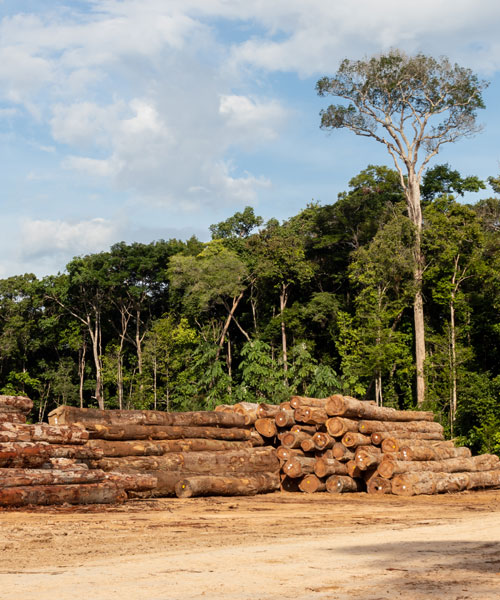
Why Consumers Choose Ipe for Outdoor Decking
Ipe is a popular hardwood for decking and fencing. It’s very durable and resists rot and decay.
The hardwood also boasts resistance to insect attacks, making it ideal for outdoor use. Ipe’s high density makes it very strong and long-lasting. Additionally, the hardness of ipe allows for less material usage while also achieving strength similar to redwood which requires more material.
Why Teak is a Superior Choice for Outdoor Furniture
Teak’s durability for outdoor furniture applications enables products to last many years without needing maintenance or repair work. Premium or Grade A teak also resists mold and mildew better than ipe does. Mold and mildew impact wood selection because of the prevalence of these conditions outside, especially in tropical climates. In these areas, humidity levels tend to be high year round (and often drop below 50% during certain seasons).
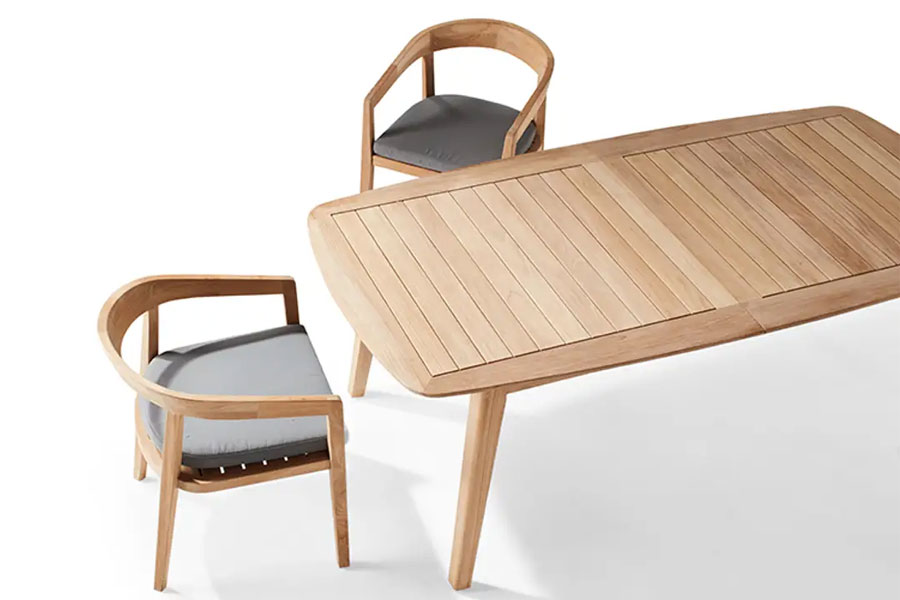
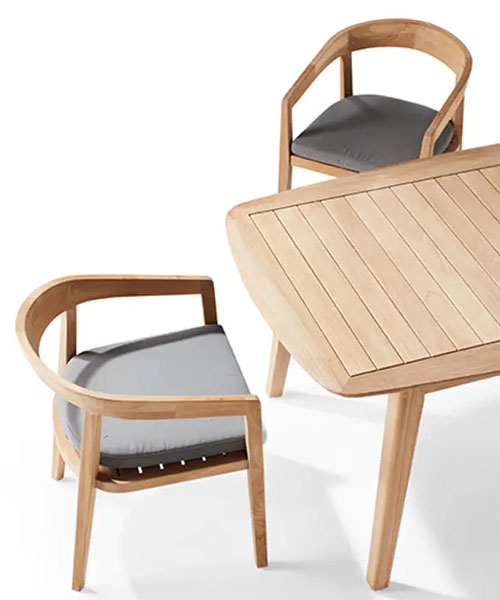
(pictured above) The Cavallo collection of outdoor dining furniture, featuring sweeping curves shaped from premium teak
Teak is also easier to work with and shape than ipe, which often breaks blades due to its unparalleled hardness. And from an aesthetic perspective, many prefer the golden hue of natural teak over the darker coloring of ipe wood.
Consider all the factors, including environmental impact
When deciding on whether to use ipe vs. teak for outdoor furniture, consider all the factors. An obvious one is cost. Both ipe and teak are considered high-end woods, so neither are cheap.
Scarcity is a big factor in the cost of both woods. “Old-growth” teak is nearly impossible to procure and is even illegal to harvest in many countries today. However an increasing amount of premium grade “plantation-grown” teak is available on the marketplace today.
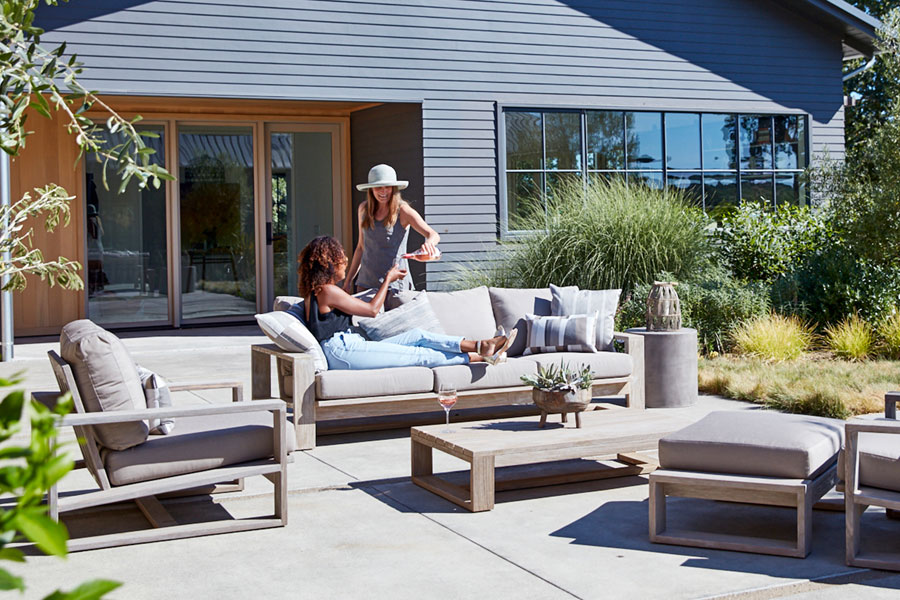
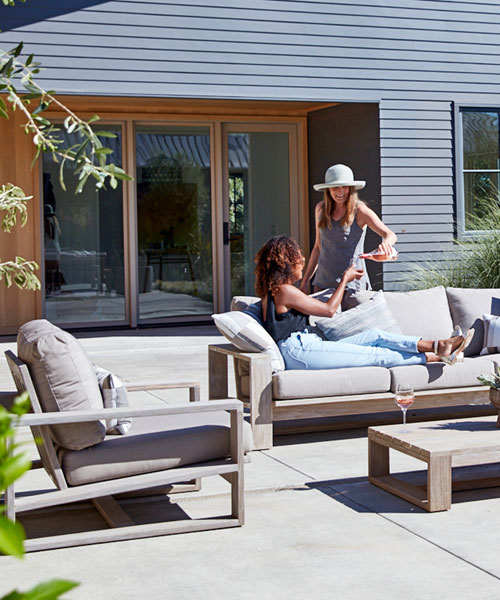
(pictured above) The Nicasio collection’s solid teak frames are sustainably sourced from government-certified teak plantations in Indonesia.
With growing concern over the paid disappearance of the Amazon rainforests, the use of ipe has become a bit of a political flashpoint. In 2008 pledge NYC Mayor Michael Bloomberg committed to reduce New York’s tropical hardwood use by 20 percent at the United Nations General Assembly . Following that pledge NYC Parks & Rec. stopped using tropical wood in park benches. Soon after, San Francisco, Santa Monica, and Baltimore also banned the use of tropical hardwoods completely for municipal projects.
Settling the Ipe vs. Teak Debate
Ipe is a great wood for outdoor furniture and other applications, but due to rising costs and environmental concerns, it’s less attractive than it once was. With growing sources of sustainably-harvested and/or reclaimed teak available in the global marketplace, teak is a better outdoor furniture material for most consumers.
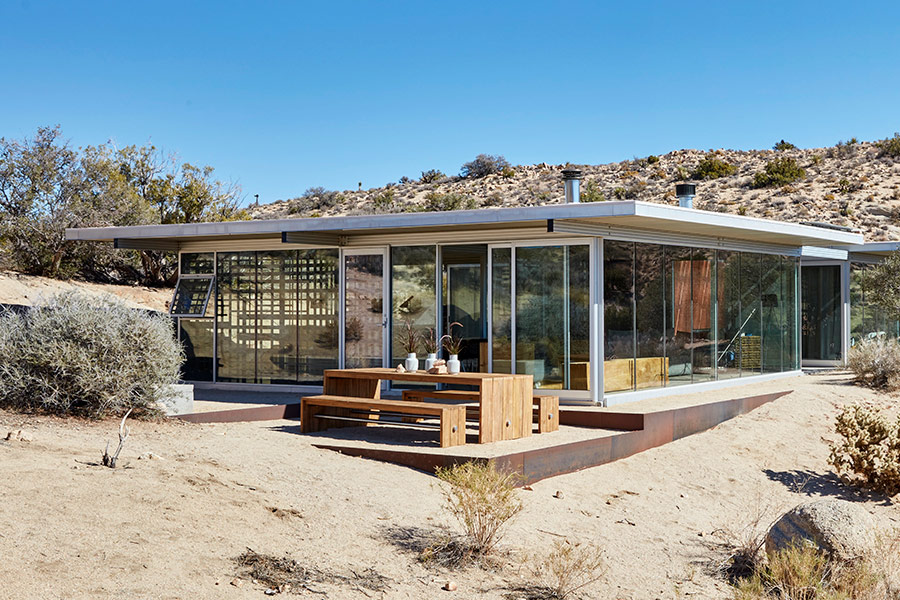
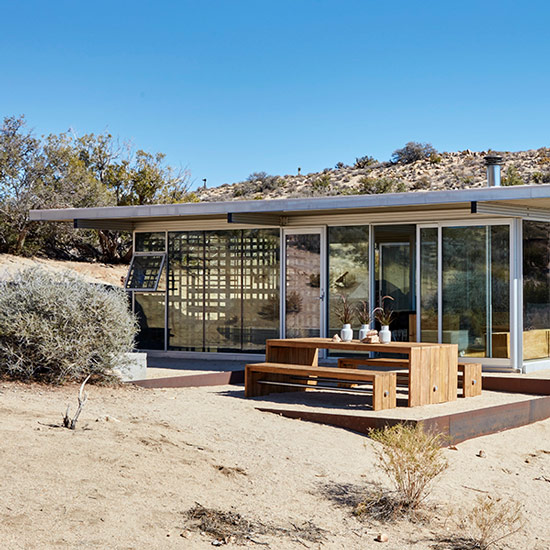
(pictured above) The tables and benches of the Sea Ranch collection are built from reclaimed teak sourced from demolished structures in the Java region of Indonesia

